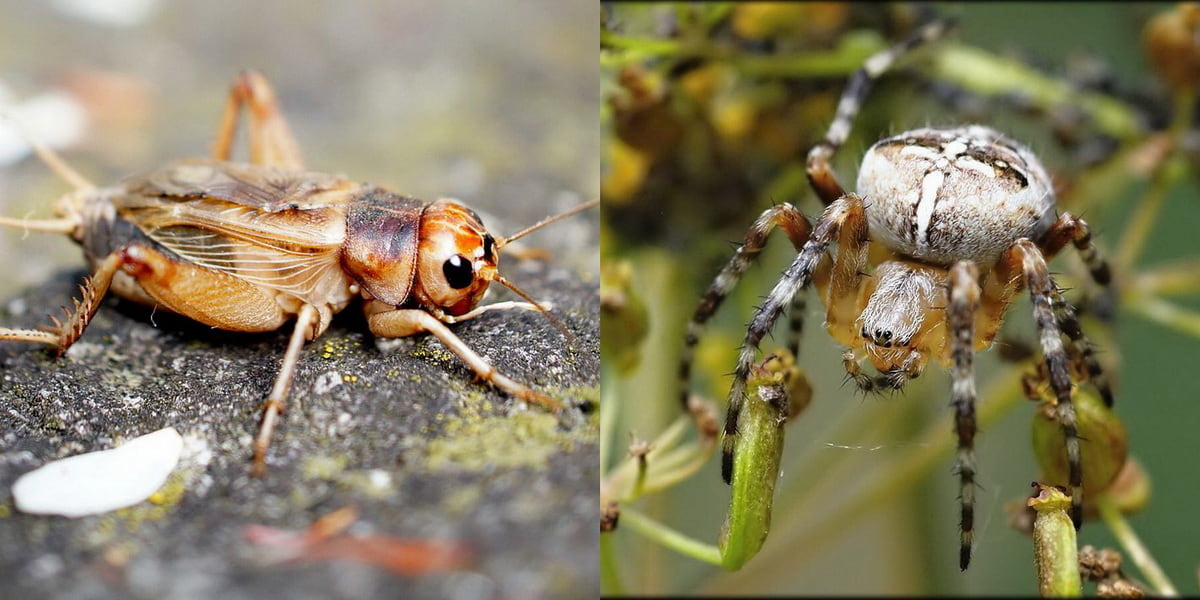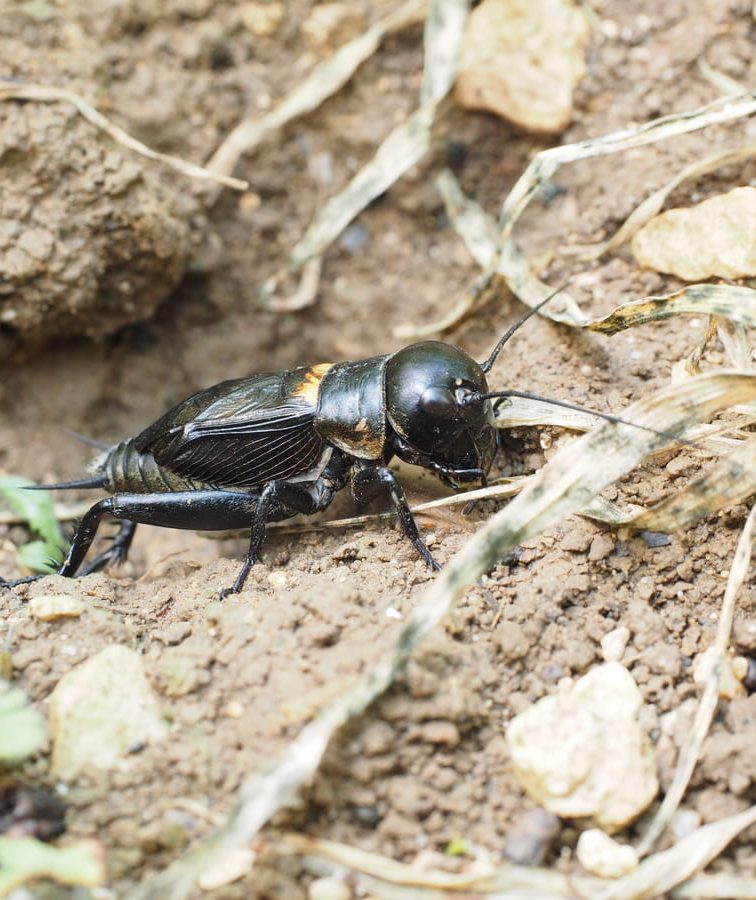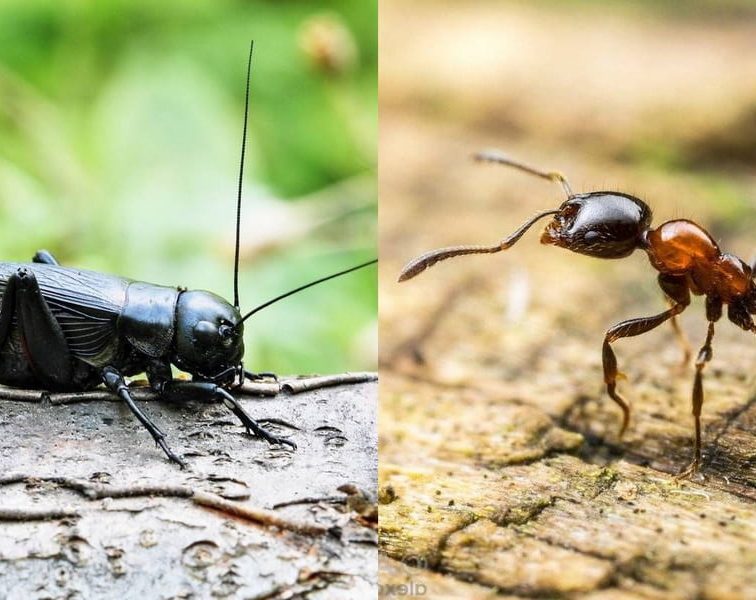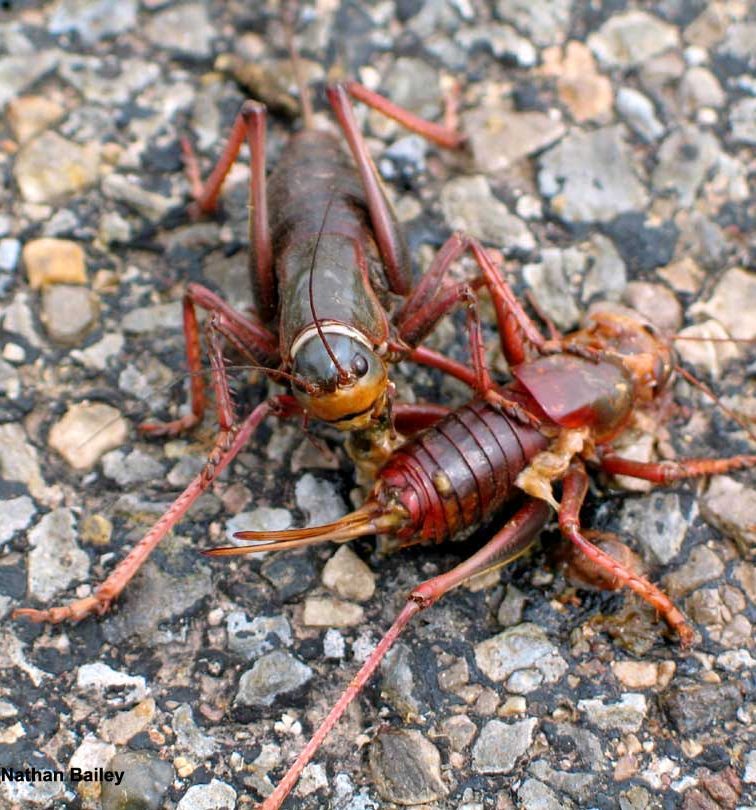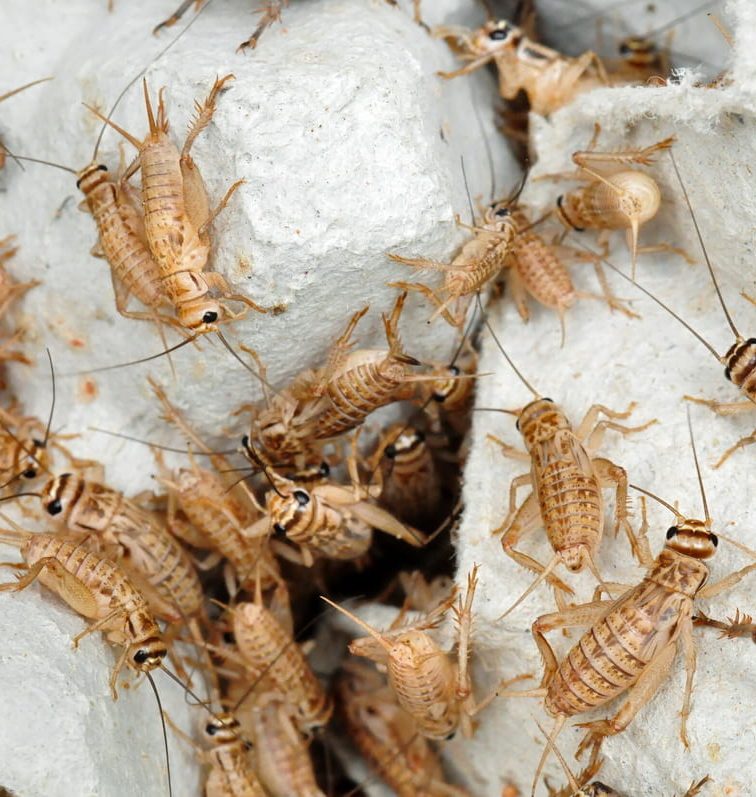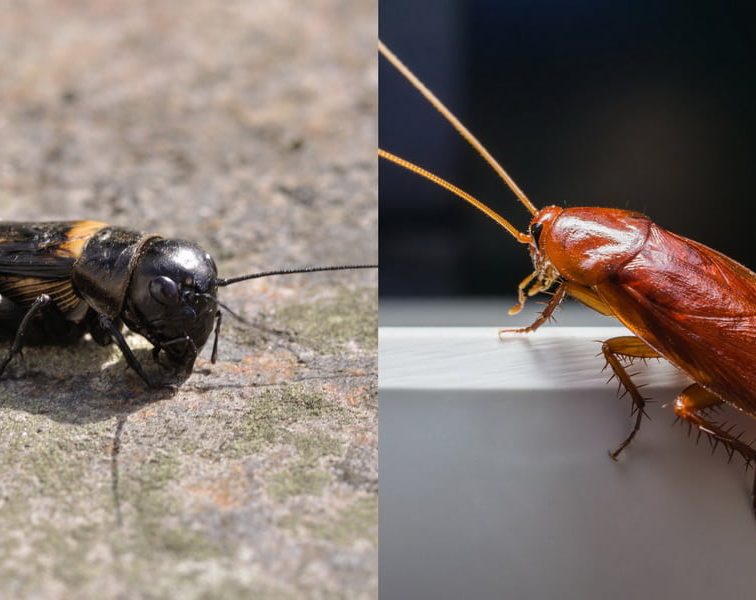In the intricate web of nature’s food chain, a seemingly simple question like “Do Crickets Eat Spiders?” unveils a world of predator-prey dynamics far more complex than one might imagine. While the image of a cricket might conjure thoughts of a harmless, chirping insect, the reality of their dietary habits is surprisingly diverse. Crickets, often perceived as the prey, step into an unexpected role when it comes to spiders.
This article delves into the fascinating, often overlooked aspect of crickets’ omnivorous diet, revealing how these ubiquitous insects interact with one of nature’s most skilled predators. Prepare to explore a hidden side of the cricket’s world, where the lines between hunter and hunted blur in the struggle for survival.
Crickets’ Dietary Preferences
Crickets are omnivores with a diverse diet, crucial for their adaptability in various environments. They feed on a range of foods including plant materials like seeds, fruits, and vegetables, and animal matter such as small insects, larvae, and dead animals. This opportunistic feeding behavior enables them to thrive in different habitats, from forests to urban areas.
In captivity, crickets can be fed a similar diet, emphasizing the importance of a balanced nutrition, especially when they are used as feeder insects for other pets.
Find out more about what do crickets eat.
Interaction with Spiders
Crickets do eat spiders, typically targeting smaller ones or those in early development stages to avoid the risks associated with adult spiders. Spiders, especially mature ones, can pose a threat to crickets by attacking and eating them.
Crickets find spiders to be a valuable source of food, given their delicate and thin bodies that make them easier to consume. However, this feeding behavior is not without risk. Some spiders, such as black widows, contain neurotoxic venom that can be harmful to crickets, causing paralysis and even death.
Despite these dangers, crickets continue to consume spiders, highlighting the complex interplay between predator and prey in the natural world.
Hunting and Feeding Techniques
Crickets are skilled hunters, utilizing their exceptional jumping ability and various other techniques to catch prey. They display diverse hunting behaviors, including ambush and active hunting strategies.
- Ambush Hunting: Some cricket species, like field crickets, are ambush predators. They patiently wait for their prey, such as smaller insects or spiders, to come within striking distance before pouncing on them with their powerful jaws.
- Active Hunting: Other crickets take a more proactive approach, actively searching for prey. They use their keen senses to detect potential meals and may employ their agility and speed to chase down or leap onto their targets.
- Utilization of Jumping Ability: Crickets are renowned for their extraordinary jumping ability, which they use to their advantage when hunting. This ability allows them to cover greater distances quickly, enhancing their chances of catching fast-moving prey like flies – a technique that could be parallel to how they might catch spiders.
- Feeding on a Variety of Prey: Their diet includes a range of insects such as flies, moths, beetles, ants, smaller spiders, grasshoppers, and small worms. This diversity in their diet highlights their adaptability as predators and their role in the ecosystem.
Crickets’ ability to capture a diverse range of prey and their omnivorous diet play a crucial role in their survival and their ecological significance. They contribute to the balance of ecosystems by controlling insect populations and serving as a food source for various predators.
Conclusion
In conclusion, crickets do eat spiders, incorporating them into their varied and opportunistic diet. This behavior highlights the adaptability and resourcefulness of crickets in their ecological role.
While spiders can be a valuable source of food for crickets, there is an inherent risk involved, especially when dealing with venomous species like black widows. The interaction between crickets and spiders is a fascinating example of the complex predator-prey dynamics in nature.
FAQ
Are crickets afraid of spiders?
Crickets, like many other insects, exhibit behaviors that suggest they are wary or cautious around predators, including spiders. Spiders are natural predators of crickets and pose a significant threat to them. In the wild, crickets may exhibit avoidance behaviors when encountering spiders, indicating a sense of fear or an instinct to escape potential danger. However, the exact extent of fear or awareness crickets have towards spiders is not fully understood, as it’s challenging to measure these emotions or instincts in insects.
Can crickets hurt tarantulas?
Generally, crickets are not a threat to tarantulas. Tarantulas are predators and often feed on crickets. However, under certain circumstances, crickets could potentially harm a tarantula. For example, if a tarantula is molting (a vulnerable time when it sheds its exoskeleton for growth), crickets might nibble on the soft and defenseless tarantula. This scenario is more likely in a captive environment where a tarantula and crickets are confined together. It’s recommended to remove any uneaten crickets from a tarantula’s enclosure to avoid any potential harm during the molting process.
Do crickets eat other bugs?
Yes, crickets do eat other bugs. They are omnivorous and have a diverse diet that includes various insects. Crickets are known to consume small insects, insect larvae, and even other crickets, especially in situations where food is scarce. Their diet in the wild consists of both plant material and animal matter, demonstrating their opportunistic feeding habits. The consumption of other insects is a part of their natural behavior to obtain necessary nutrients, including proteins and fats.


